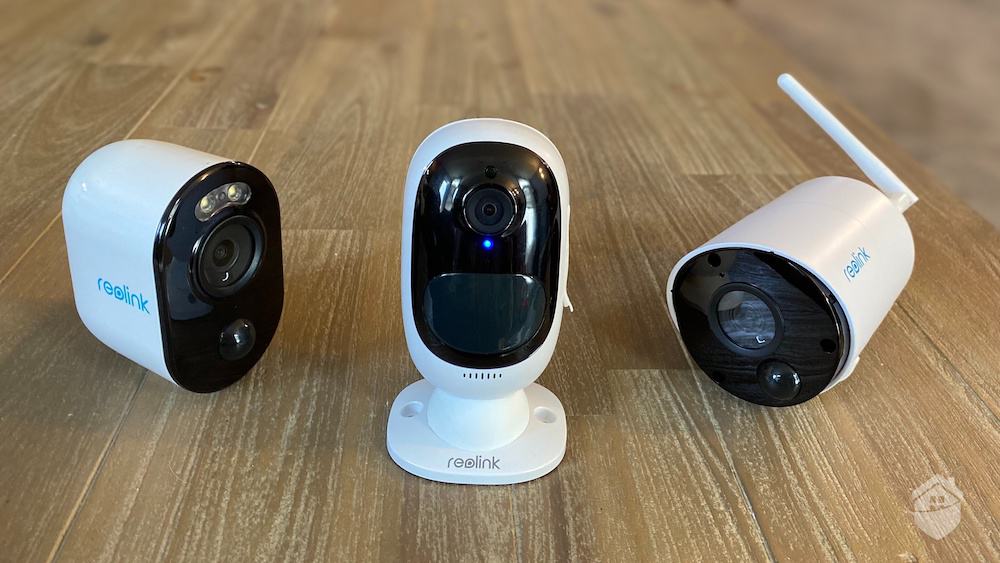
We’ve all had to deal with a bad neighbor, this writer included. Mine was the classic passive-aggressive nuisance who showed up on my front porch from time to time clutching Hefty bags filled with garbage he said the raccoons had scattered onto his driveway from my cans.
How do you deal with these neighborhood troublemakers without losing your mind and sense of security? Here are a few safety-minded tips that will help you tame the savage grump whose wheezing bulldog is pooping in your yard.
Did You Know? In the eyes of the law, nuisances come in two categories: public and private. Public nuisances are the pests who set the whole block on edge with their disturbing behavior, like selling drugs out of their garage. A private nuisance is the guy whose Pekingese takes a load off in your bushes in the morning while you’re at work.
Tip 1: Do Your Reconnaissance
When my sister-in-law was considering the neighborhood she lives in now, she drove out there with her husband one Friday night after 10 p.m., parked across the street from her prospective new home, and sat there like Richard Dreyfuss and Emilio Estevez in “Stakeout.” She isn’t a voyeur. It was her way of testing the neighborhood noise levels on the rowdiest night.
You don’t have to camp out in your car at midnight to scope out a neighborhood (although I happen to think my sister-in-law’s plan was pretty ingenious). You can take a walk around the block on a Saturday afternoon or a Monday evening. If there are too many loud youngsters about or too many barking dogs or old cars laid up on cinder blocks — and you’re looking for a quiet, clutter-free neighborhood — it may be a sign you’re going to have trouble fitting in.
FYI: Courts in Texas don’t judge how reasonable a bad neighbor’s actions are. To determine if they’ve officially become a neighborhood nuisance, they consider whether their behavior is “discomforting” other neighbors.1
Tip 2: Talk It Out When You’re Both Calm
Ever sent an email when your blood was boiling? Bad move, right? It’s the same with troublesome neighbors. If your neighbor’s kid throws a crab apple at your 10-year-old daughter, you definitely need to talk about it. But you don’t want to confront them while they’re still getting Dennis the Menace’s side of the story and you’re mad enough to self-combust. That’s a recipe for more crab apple hurling — or worse. Instead, wait until everyone’s blood pressure has settled.
A reasonable neighbor-to-neighbor convo isn’t necessarily going to solve the issue — and tempers on ice may still flare — but, as the saying goes, time heals all wounds, even those inflicted by the progeny of horrible neighbors.
Pro Tip: An alternative to a face-to-face discussion is to put your grievance in writing. You’ll have to judge if this is feasible. “Dear Tommy, I noticed you’ve been shooting flaming arrows at gas cans in your backyard and then uploading the explosions to TikTok…” may not persuade Tommy to choose another hobby. In which case, jump right to Tip 6.
Tip 3: Keep a (Video) Record
My brother lives in northern New Jersey on a beautiful, tree-lined block. His home office faces the street. One morning he noticed an older lady jogger he’d never seen before duck between two parked parks, drop her sweats, and relieve herself. Yikes! It happened the next day too — same time, same place — and the day after that. And just like that, my brother had become the victim of repeat pee-and-runs.
After a few weeks of this, it was time to call the police. The only problem was, it was my brother’s word against hers. Instead of resigning himself to his fate, or awkwardly confronting the lady, my brother jumped online, bought a cheap security camera from Amazon, and set up a live feed of his yard. When she struck the next time, he caught it on video.
Hopefully you’ll never have to deal with a nuisance as weird and disgusting as that. But if you have a beef with your neighbor that involves violations of civic code — pollution, in this case — having evidence helps. I don’t recommend buying the first cheap-o camera you find on Amazon, though. There are plenty of excellent bargain security cameras that have passed all our tests with flying colors. Check those out first.
Did You Know? If you plan to record a nasty neighbor in action, make sure your camera isn’t pointed at their house. Anything that happens on your side of the property line is fair game, but filming families on their property could land you in trouble with the law. For more on sneak recording, check out our guide to hidden cameras in and around the home.
Tip 4: Install a Spotlight
Everyone has a different idea of how loud a dog can bark before it becomes an official neighborhood nuisance, but your property is your property. If the jerk next door is snooping around your yard at night or letting his pets or kids roam onto your property, an ice-cold blast from a 3,000-lumen motion-activated bandit beam (floodlight) will send them back to their side of the driveway faster than you can say, “Hey Google, turn on porch lights.”
To be clear, I’m not recommending that you buy a quality outdoor camera with a floodlight as an act of revenge on a quarrelsome neighbor. Cameras are basic home security these days because they keep intruders away. But if you’re dealing with a nosy neighbor who’s getting too close for comfort under cover of night, the latest offerings from Lorex and Arlo are beasts.
FYI: A thief caught in a spotlight is not going to be a very happy thief, but can smart lighting actually deter intruders? Here’s what our home security experts have to say.
Tip 5: Do Your Research and Contact your HOA, Condo Association, or the Mayor’s Office
The one good thing about municipal codes is that they’re there in writing and everyone has access to them. The Library of Congress has put together a great resource for code hunters, so you may want to start there.2 If you’re unsure if chest-high weeds or playing music past 2 a.m. are actually against the law where you live, find out. When you’ve narrowed down your complaint to a bona fide infraction, send it to your civic association or the town clerk along with a clip or picture of the bad behavior in question (see Tip 3).
One caveat: Unless your neighbor is doing something really disturbing, like emceeing Thai cage fights in his backyard, contact the powers-that-be after you’ve tried to talk it out (Tip 1). When you get to the stage where you’re appealing to the mayor, you’ve reached Hatfield-McCoy feuding territory. Things probably won’t ever go back to normal.
Pro Tip: If a neighbor is doing something selfish, annoying, or dangerous, it’s better to address the issue sooner than later. That way they can’t fall back on the “but no one ever complained before” argument.
Tip 6: Call the Police
This is tricky. Police aren’t going to arrest Bob and Melinda from down the block for failing to repaint their house to civic code, even if their avocado and fuchsia color scheme is technically against the law (and giving everyone on the block a massive headache). Don’t waste your time or theirs. You should direct this complaint to the higher-ups if you feel strongly enough about it.
That said, if Bob and Melinda are throwing wild dance parties past 1 a.m. every Friday night and you’ve talked to them (to no avail) and lodged an official complaint (no answer yet), the police may be a good stop-gap measure. They’ll shut down the party for the night and you’ll get some sleep.
Pro Tip: Siccing the police on your neighbor may aggravate them further. Are you willing to expose your family to reprisals from a grade-A lunatic or criminal? When you start involving the cops in neighborhood politics, it may be a good time to ask yourself if you’d be happier living somewhere else.
Tip 7: Get Outside Help
If the city can’t help you and you have time to burn, you may consider a mediator, lawyer, or Judge Judy (i.e. small claims court). I’d start with a mediator, who will sit you and your neighbor down and, without taking sides, try to help you come to terms that make you both happy. It will be a lot cheaper than bringing a lawyer aboard.
To get started, visit the National Association for Community Mediation.3 It has an FAQ page with a link to a local mediator finder. Just search by state. The alternative is to google “local mediation center.” New York, at least, has county-by-county links to every center in the state.
Did You Know? If you’ve ever wondered why glaringly guilty bad neighbors choose to present their cases before Judge Judy, it’s because they get paid to appear. The show also foots the bill for travel expenses, per diems, and settlements.
Tip 8: Secure Your Entrances
I hope you never have to consider beefing up your home security to deal with a dangerous or hostile neighbor. If you decide to invest in a little quality home security equipment, I’d rather you do it for peace of mind. If it ever reaches the point where Don from next door is threatening to bust down your front door, however, make sure you have a sturdy dead bolt. Any of these top smart locks we’ve tested will get the job done.
The next point of defense is your entryways. Door and window sensors will tell you if an unwanted visitor has entered your home. If you want to be able to monitor Don’s comings and goings, on the other hand, the video doorbells we recommend all come with sirens and two-way talk, so they can easily serve as your personal Doncom. “Nice to see you again, Don. Get off my porch or you’re going to get an earful of my Ring Pro 3.”
Not ideal, but you’re not the one pounding on your neighbor’s door like Jack Nicholson in “The Shining.” That would be Don.
Did You Know? Some video doorbells with AI — notably the Google Nest Doorbell — can recognize faces. Once you teach your ringer who the angry guy with the bloodshot eyes is, it will tell you when he’s at your door.
SafeHome’s Latest Livestream
Our home security experts are now doing livestreams with industry experts like retired SWAT Commander Gene Petrino. Learn how to protect your home and family from thieves, burglars, and home invaders.
Final Thoughts
Bad neighbors may be fun in the movies, but in real life they have a nasty habit of turning our lives upside down. If you can, nip your bad neighbor problem in the bud by choosing your neighborhood wisely.
Even if your hostile neighbor situation turns from bad to worse, you’ve still got plenty of options — from contacting your civic association to calling the police to hiring a mediator or lawyer. Just don’t forget to document everything.
It isn’t likely that your neighbor will threaten you, but if you catch yourself wondering if your home has the physical security to withstand an attack, maybe it’s time to look into your home security options. You don’t need to go full bore and turn your house into a fortress with professionally installed security equipment by ADT or Vivint, although many homeowners swear by those brands. Most basic best-in-class DIY security systems we’ve reviewed cost less than $300, so you can start there.
FYI: SafeHome is now livestreaming! Got questions about home security? Email us at info@safehome.org, and we’ll answer your questions live on our next stream—personalized advice, straight from the experts. Find us on YouTube @safehome_org. Don’t miss out!
Bad Neighbor FAQs
- Should I talk to a neighbor if I have an issue with their behavior, or is it better to call a lawyer?
Definitely try talking it out, but when you’re both calm. Lawyers are a last resort.
- Is it OK to call the police if I’m having a problem with one of my neighbors?
Yes, but only in certain situations. The police can get your neighbor to turn down their music, but they can’t resolve boundary disputes or force them to trim a tree or repaint their house.
- Can I record a video of my neighbor’s bad behavior?
Yes, you can and should — provided your camera isn’t aimed at their home.
- What should I do if my neighbor threatens me or my family?
Call the police immediately.
- Can my civic association do anything to help me resolve my bad neighbor problem?
Yes, they can. If your neighbor is doing something illegal, your civic association or condo board can threaten or issue fines. After that, try a mediator. If none of that works, you may want to consider hiring a lawyer.





